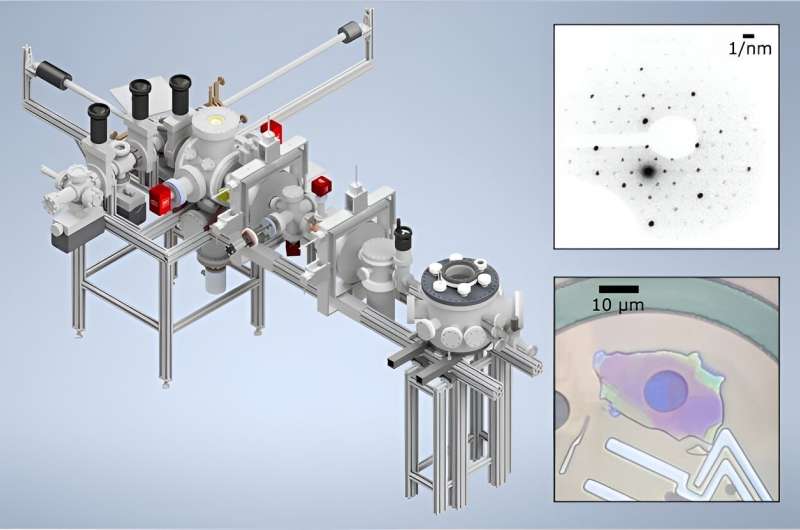This article has been reviewed according to Science X's editorial process and policies. Editors have highlighted the following attributes while ensuring the content's credibility:
fact-checked
trusted source
proofread
Novel material enables an ultrafast electron diffraction probe for quantum materials

Quantum materials have a host of exotic electronic, magnetic, and optical properties that make them prime candidates for use in future computing and energy technologies. Their properties arise from a complex interaction of their electrons and atomic nuclei. Researchers can observe these interactions as they happen using short pulses of X-rays or electron beams. These pulses last less than a trillionth of a second.
Using new materials that emits a narrow electron probe, researchers have developed an ultrafast electron beam technique to probe small, thin pieces of quantum materials with very high resolution.
Scientists so far cannot create many newly emerging quantum materials as large crystals. Instead, these materials form crystals only one-tenth as wide as a human hair. This poses a challenge for researchers probing these materials using ultrafast electron beam accelerators, as electron beam quality often limits how small an area these beams can focus on.
In this study, researchers used a specialized source of electrons to produce a substantial improvement in electron beam quality. This enables crisp images of samples only a few microns wide and of processes that take place in less than a trillionth of a second. This work could lead to a clearer image and understanding of how quantum materials function at atomic space and time scales.
These accelerators typically generate ultrafast electron pulses via a process called photoemission, wherein laser light knocks electrons out of a material, usually a simple metal like copper. If the laser pulse is short in duration, the emitted electron beam will also be short. One challenge with typical photoemission sources is that the electrons emitted do not all travel in the same direction. This spread in emission angle can ultimately limit researchers' ability to focus the electron beam on a small spot.
In this work, researchers developed a photoemission-based electron accelerator with an advanced, in-house grown photoemission material that produces many electrons with a much smaller spread in emission angle. Using this source in conjunction with precise electron focusing optics, the researchers performed proof-of-principle ultrafast electron diffraction experiments which showed the ability to resolve subtle atomic details in samples as small as just a few microns in size.
The findings are published in the journal Structural Dynamics.
More information: W. H. Li et al, A kiloelectron-volt ultrafast electron micro-diffraction apparatus using low emittance semiconductor photocathodes, Structural Dynamics (2022). DOI: 10.1063/4.0000138
Provided by US Department of Energy





















